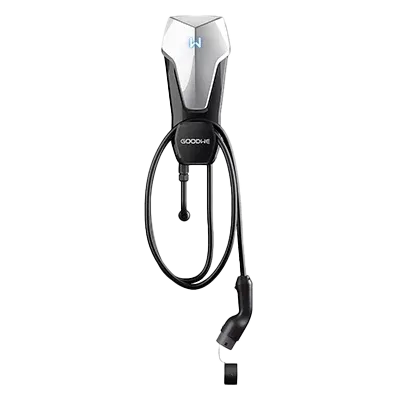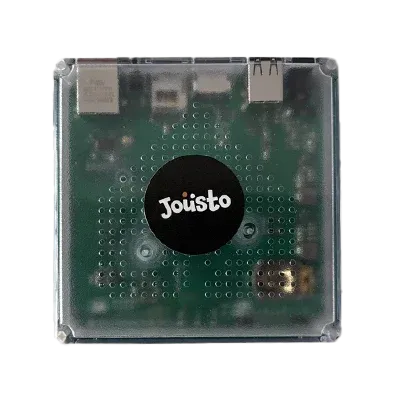
GoodWe EV Charger 7kW
Single-phase AC charger (IP66), perfect for most Aussie homes. Pair with Energy Hub for solar-aware charging.
Choose a charger, add the Jousto Energy Hub to charge from sunshine and cheap off-peak power, then book installation. Simple, smart, and ready for every EV.

Quality hardware, great value — and smarter with the Jousto Energy Hub.

Single-phase AC charger (IP66), perfect for most Aussie homes. Pair with Energy Hub for solar-aware charging.

Faster AC charging for three-phase homes and EVs that support higher rates. Solar-smart with Energy Hub.

Make charging solar-aware on day one. Includes Genius Agent to guide your self-setup & automations.
Learn more about the Jousto Home Assistant Genius.
Choose your charger
Pick 7kW or 22kW GoodWe model.
Add the Energy Hub
$249 with Genius Agent for self-setup.
Checkout online
We’ll confirm details and schedule install.
Charge on sunshine
Smart modes for solar and off-peak.

The increasing adoption of residential solar power, battery storage, and electric vehicles (EVs) is revolutionising how energy is generated, stored, and used in the home. However, without intelligent coordination, these technologies often operate independently—missing key opportunities for efficiency and cost savings. This is where smart energy automation steps in.
Smart energy automation enables homeowners to manage all aspects of their energy ecosystem—generation, consumption, and storage—from a single, intelligent control system. By integrating solar PV systems, home batteries, EV chargers, and smart appliances, these solutions can optimise energy flows in real time.
This blog explores how smart energy automation is reshaping home energy management, covering its core concepts, technologies, market-leading products, key benefits, and challenges. It also outlines the companies and systems driving innovation in this space.
At its core, smart energy automation is about managing where and when energy is used, stored, or exported. A smart energy system might decide to:
Power appliances directly from solar during the day,
Store excess energy in a home battery,
Use stored energy at night or during peak tariff times,
Or schedule EV charging based on solar availability.
This approach maximises self-consumption, reduces electricity bills, and improves energy independence. Solutions like SolarEdge Home enable dynamic control over energy sources and consumption, allowing the home to become a self-sustaining energy hub.
Smart automation can optimise the charging of batteries and EVs to occur during:
Peak solar generation,
Off-peak tariff windows,
Or ahead of forecasted high-energy use periods.
For example, Home Assistant users commonly set up automations that delay battery charging until overnight rates apply or only charge the EV when solar production is high. This results in dramatic cost savings and a reduced carbon footprint.
During grid outages or when battery charge is low, load prioritisation ensures critical devices (like medical equipment or fridges) continue to run, while non-essentials (like pool pumps or entertainment systems) are shut off.
SPAN smart panels take this further by giving users appliance-level control over circuits. This kind of granular management extends battery backup time and ensures business-critical or life-critical systems remain online.
Mobile apps and cloud dashboards give homeowners complete visibility into their energy system:
Solar output
Battery charge levels
EV charging status
Appliance usage
Apps like mySolarEdge or the SPAN Home App allow real-time insights, system control, and even adjustments from anywhere in the world. This remote capability turns energy usage into a data-driven, user-friendly experience.
Modern smart inverters go beyond energy conversion—they communicate with batteries, EV chargers, and home automation platforms. Market leaders like SolarEdge offer DC-optimised technology with panel-level performance data and control.
These inverters are crucial for coordinating how solar power is used:
To charge batteries,
To run home loads,
Or to supply energy to the grid.
Batteries are the foundation of energy independence. Popular home battery solutions include:
Tesla Powerwall
LG Chem RESU
Alpha ESS
BYD
SolarEdge Home Battery
These batteries store solar power during the day and release it when needed—especially useful during peak tariff periods or blackouts. SPAN smart panels are compatible with 90% of these systems, highlighting the value of interoperability in the smart home energy space.
Smart EV chargers schedule vehicle charging when:
Solar generation is high
Electricity prices are low
The battery is full and exporting to the grid would be wasteful
SolarEdge Home EV Charger and SPAN Drive integrate directly with solar and battery systems to minimise charging costs and allow homes to "drive on sunshine."
Traditional electrical panels are being replaced by intelligent control centres like:
SPAN Smart Panel
Leviton Smart Circuits
Lumin Smart Panels
These panels enable:
Real-time appliance-level insights
Remote control of circuits
Smart energy scheduling
Seamless integration with solar, battery, and EV systems
SPAN, for example, uses PowerUp technology to intelligently manage the addition of high-demand devices (e.g. EV chargers, heat pumps) without overloading home infrastructure.
Platforms like Home Assistant offer DIY-savvy homeowners a way to integrate and automate:
Solar inverters
Battery systems
EV chargers
Smart thermostats
Weather data
Time-of-use tariff schedules
Reddit and GitHub communities are rich with custom automations, enabling everything from solar-forecast-driven battery charging to real-time load shifting.
One of the top reasons homeowners adopt smart energy systems is to reduce electricity bills. By charging batteries and EVs at optimal times, avoiding peak tariffs, and increasing self-consumption, families can save up to 60% annually (as reported by SolarEmporium in Australia).
SPAN further supports cost saving with dollar-based energy insights tied to real utility rates, allowing homeowners to make informed adjustments.
A fully integrated solar, battery, and EV system can operate with minimal grid interaction—especially when paired with smart automation. Brands like SolarEdge and Alpha ESS enable homes to function as standalone energy systems, dramatically reducing exposure to rising utility costs or power outages.
Beyond the home, smart energy automation can help support the broader grid. Through programs like demand response or vehicle-to-grid (V2G), homeowners can sell surplus energy or reduce demand during peak periods.
This decentralised energy sharing model contributes to a more stable, decentralised, and renewable-friendly energy grid.
Smart automation ensures that solar power is used first, reducing the carbon impact of home energy. EVs charged via solar instead of grid electricity result in a net-zero driving experience, while prioritising battery storage over fossil-fuel-supplied grid energy can cut emissions significantly.
Automated battery management provides critical load protection during blackouts. SPAN and SolarEdge systems allow users to prioritise circuits so essentials like lights, medical devices, and internet remain functional for hours—or even days—without the grid.
A major barrier to adoption is the high upfront cost of solar panels, batteries, smart panels, and EV chargers. Although the ROI is strong over time, affordability remains a challenge for many households.
Government rebates and incentives help reduce this burden, but adoption may be slower among lower-income groups until costs fall further.
Smart energy systems can be complicated, particularly when integrating devices from different manufacturers. Proprietary ecosystems like SolarEdge simplify this, but for those building custom systems, ensuring compatibility and proper configuration can be overwhelming.
As homes become more connected, cybersecurity becomes a concern. Protecting access to energy controls, consumption data, and system settings requires:
Encrypted communications
Strong passwords
Frequent firmware updates
Homeowners should be mindful of choosing reputable vendors with clear security protocols.
The economic return of smart energy investments is often influenced by local grid policies—like feed-in tariffs, net metering, or limits on battery discharges. Changes in policies (e.g. California’s NEM 3.0) can significantly affect ROI.
Smart systems must be installed by certified professionals, especially when involving high-voltage equipment. Maintenance of solar arrays, battery calibration, and software updates require ongoing attention to keep the system performing efficiently and safely.
These "one-brand" systems offer:
Seamless compatibility
Centralised monitoring apps
Unified warranties and support
However, they may limit flexibility and lock users into a single brand ecosystem.
Using platforms like Home Assistant, users can build tailored systems using best-in-class components from multiple vendors. This offers flexibility, but requires more technical expertise.
Smart panels act as the brain of the system, connecting all appliances, batteries, and renewables into one central control platform. They simplify upgrades and provide high visibility and granular control.
Energy providers like Oncor are investing in smart grid technologies and incentive programs that reward homeowners for reducing demand or integrating clean energy. These programs often include rebates or discounts for installing smart batteries and EV chargers.
Smart panels have emerged as a critical control hub in modern homes. With real-time visibility, remote circuit control, and compatibility with renewable systems, they:
Enable efficient load prioritisation,
Reduce installation complexity,
And increase safety through overload detection and smart fuses.
As homes get smarter, the electrical panel becomes the nervous system of energy flow.
For tech-savvy users, platforms like Home Assistant offer unlimited control:
Automate battery charging based on solar forecasts,
Sync EV charging with off-peak grid pricing,
Control HVAC based on room occupancy and solar availability.
These platforms turn homes into truly intelligent energy ecosystems, often outperforming proprietary systems in flexibility and innovation.
Smart energy automation is not a future concept—it's happening now. Homes with integrated solar, batteries, and EVs are already realising huge benefits in:
Cost savings,
Energy resilience,
And sustainability.
As technology advances, expect greater use of AI and machine learning to predict demand, optimise schedules, and deliver even more efficient systems. The rise of vehicle-to-grid (V2G) tech will allow EVs to play a role in national grid support. And as prices drop, these systems will become accessible to more homeowners around the world.
The home of the future is smart, connected, and self-powered—and smart energy automation is what makes it all possible.
If you're looking to take control of your energy future—cutting costs, boosting efficiency, and increasing your home's independence—smart energy automation is your next step. Discover how you can seamlessly integrate solar, battery storage, EV charging, and more into one intelligent system.
👉 Explore smart energy solutions now at Jousto and unlock the power of automation for your home.

© Copyright 2025.Honen Lead Generation.
All Rights Reserved.
Phone: 0489 261 333
185 Morphett St, Adelaide, SA, 5000